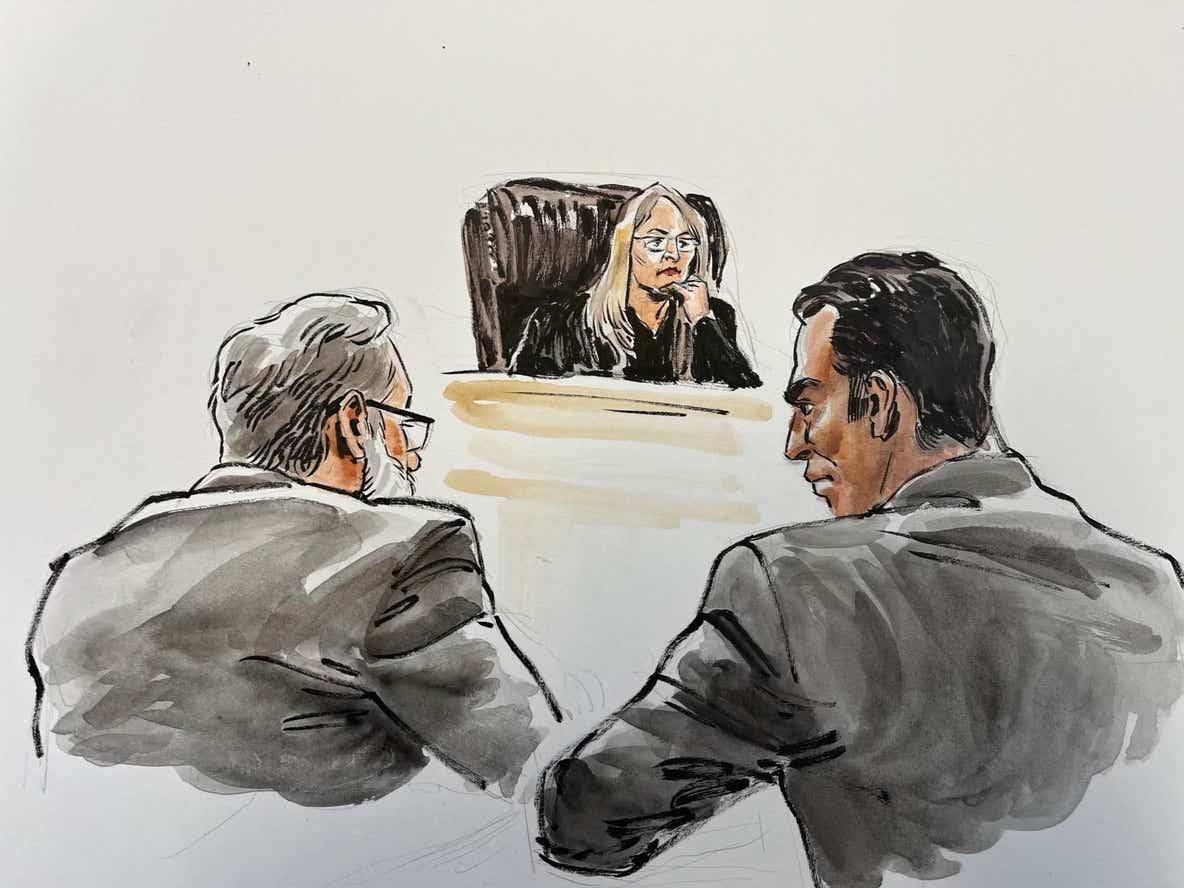Judge Gull's Role: A Question of Judicial Fairness

Special Judge Fran Gull’s oversight of the Richard Allen trial raises significant concerns about potential bias and the creation of an environment that undermined Allen’s ability to receive a fair trial. Her rulings and conduct - spanning pre-trial, intra-trial, and post-trial phases - frequently favored the prosecution, restricted the defense’s ability to present a robust case, and appeared influenced by external pressures rather than impartial justice. Below, we examine key aspects of Judge Gull’s actions that suggest a lack of neutrality and compromised the integrity of the judicial process
Pre-Trial: Setting a Restrictive Tone
Before the trial began, Judge Gull made decisions that limited the defense’s scope and signaled a predisposition toward the prosecution’s narrative. Most notably, she repeatedly rejected motions to introduce the defense’s third-party “Odinism” theory, which posited that the murders could have been committed by followers of a Norse pagan religion. While the theory’s relevance was debated, Gull’s outright dismissal, without allowing exploration of plausible alternative suspects (including one who had confessed to the murders in detail), prevented the defense from challenging the prosecution’s singular focus on Allen. This ruling was particularly troubling given the absence of definitive forensic evidence linking Allen to the crime, as it curtailed the defense’s ability to sow reasonable doubt by presenting other plausible scenarios. Additionally, Gull’s imposition of a gag order early in the proceedings restricted public discussion by both sides, but its impact disproportionately affected the defense, who were already battling a narrative shaped by years of public speculation and leaks, likely from state sources. By stifling the defense’s voice pre-trial, Gull created an uneven playing field that hindered Allen’s ability to counter prejudicial assumptions.
At Trial: Tilting the Scales
During the trial, which ran through October and November 2024, Judge Gull’s rulings consistently appeared to favor the prosecution, limiting the defense’s ability to fully contest the state’s case. For instance, she allowed the prosecution to heavily rely on Allen’s alleged confessions - despite clear evidence of his mental deterioration under solitary confinement, including psychosis and involuntary medication with haloperidol - without imposing strict scrutiny on their admissibility. The defense’s arguments about coercion, supported by testimony from psychologists like Dr. Deanna Dwenger, were given short shrift, as Gull permitted the prosecution to play emotionally charged recordings, such as Allen’s statement to his wife, “I did it. I killed Abby and Libby.” This decision overlooked the context of Allen’s documented breakdowns, misleading the jury.
Gull also restricted the defense’s ability to challenge key prosecution evidence, such as the contested .40 caliber unspent bullet. When the defense questioned the reliability of the ballistics methodology - highlighting the state expert’s initial non-match and the lack of independent verification - Gull did not press the prosecution to address these concerns, effectively allowing shaky evidence to stand unchallenged. Similarly, her handling of witness testimonies, like Sarah Carbaugh’s inconsistent account, failed to ensure rigorous cross-examination, permitting vague or unreliable statements to influence the jury. By contrast, Gull was quick to limit defense arguments that strayed into alternative theories or investigative failures, such as the unexplored Odinism angle or allegations of evidence tampering suggested by Libby’s phone data. This selective leniency created an environment where the prosecution’s narrative dominated, while the defense struggled to present a cohesive case for Allen’s innocence.
Post-Trial: Cementing an Unfair Outcome
Following the guilty verdict on November 11, 2024, Judge Gull’s post-trial actions further underscored concerns about her impartiality. Her decision to maintain the gag order until sentencing on December 20, 2024, prevented the defense from publicly addressing the verdict’s flaws, silencing their ability to rally support or highlight judicial errors in real time. This move contrasted with the prosecution’s ability to leverage public sentiment, as seen in Sheriff Tony Liggett’s post-sentencing claim that “justice has been served,” amplifying the state’s narrative unchecked.
At sentencing, Gull imposed the maximum 130-year sentence - 65 years for each of two murder counts, served consecutively - without apparent consideration of the case’s evidentiary weaknesses. The brevity of the sentencing hearing, lasting under two hours despite the case’s complexity, suggests a lack of deliberation about mitigating factors, such as the absence of DNA evidence or the coercion surrounding Allen’s confessions. Gull’s reliance on the jury’s verdict, without questioning its foundation in contested evidence, points to a deference to public and prosecutorial pressure rather than an independent assessment of justice. Her failure to address defense concerns about investigative sloppiness - like the rediscovery of Allen’s 2017 tip only in 2022, as noted by prosecutor Nick McLeland crediting volunteer Kathy Shank - further indicates a willingness to overlook systemic flaws that could have warranted a lighter sentence or a call for further scrutiny.
Broader Implications: An Environment Hostile to Fairness
Judge Gull’s cumulative actions created a trial environment where Allen’s presumption of innocence was undermined at every turn. Her pre-trial restrictions stifled alternative defenses, her intra-trial rulings favored emotionally charged but unreliable evidence, and her post-trial decisions locked in a harsh outcome without reflection. This pattern suggests a bias toward securing a conviction in a high-profile case, under pressure from external sources, influenced by the intense desire for closure after years of uncertainty in Delphi.
Gull’s conduct raises the specter of a trial where the deck was stacked against Allen. By limiting the defense’s ability to challenge weak evidence, explore alternative suspects, or counter prejudicial leaks by state-adjacent actors, she fostered an atmosphere where reasonable doubt was sidelined. Her apparent alignment with the prosecution’s narrative - evident in her leniency toward their questionable tactics and her dismissal of defense objections - calls into question whether Allen ever had a genuine chance of a fair trial. The maximum sentence, delivered with minimal deliberation, feels less like justice and more like a final seal on a flawed process that may have convicted an innocent man.